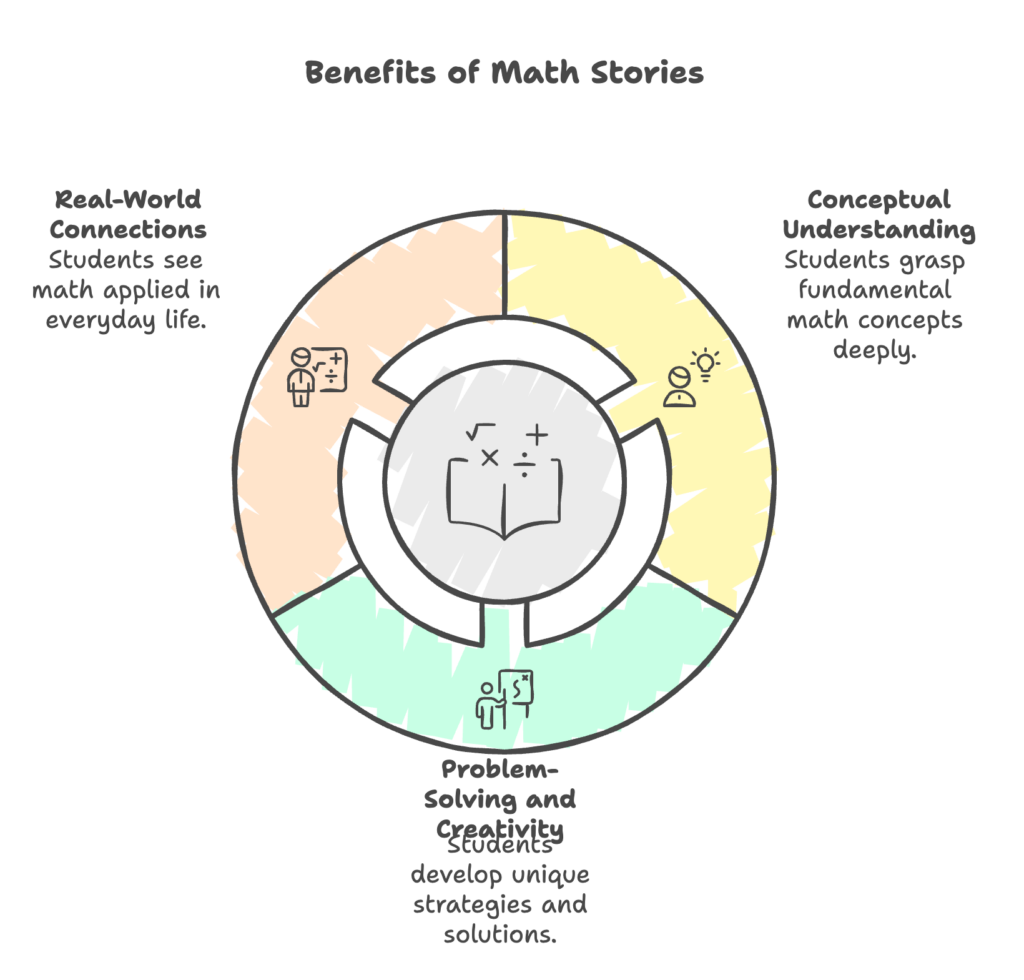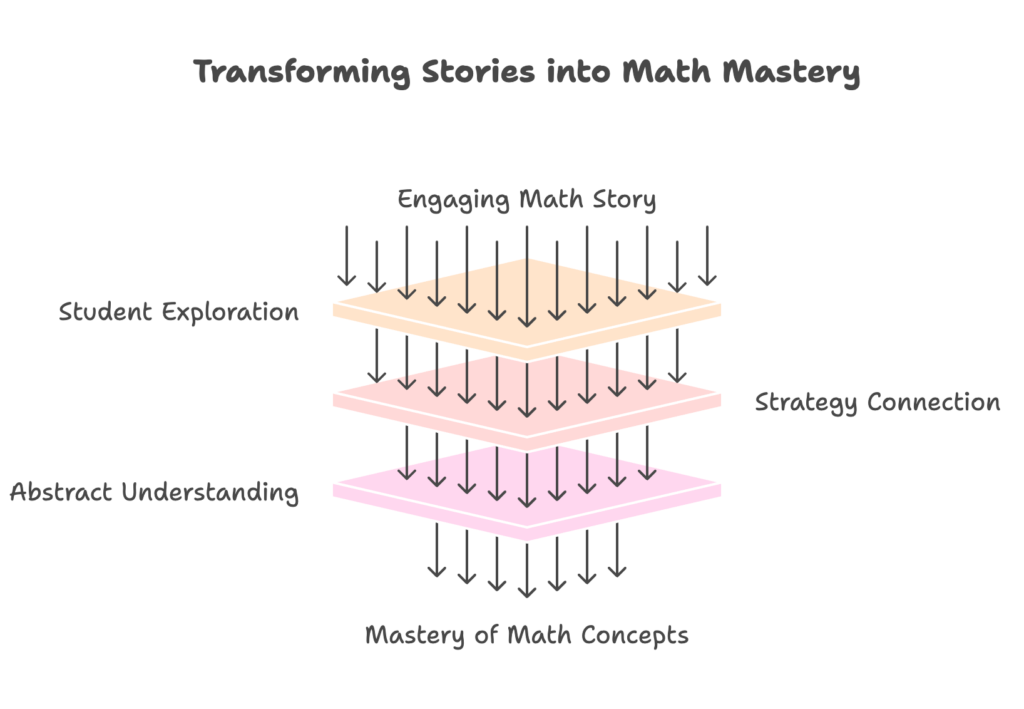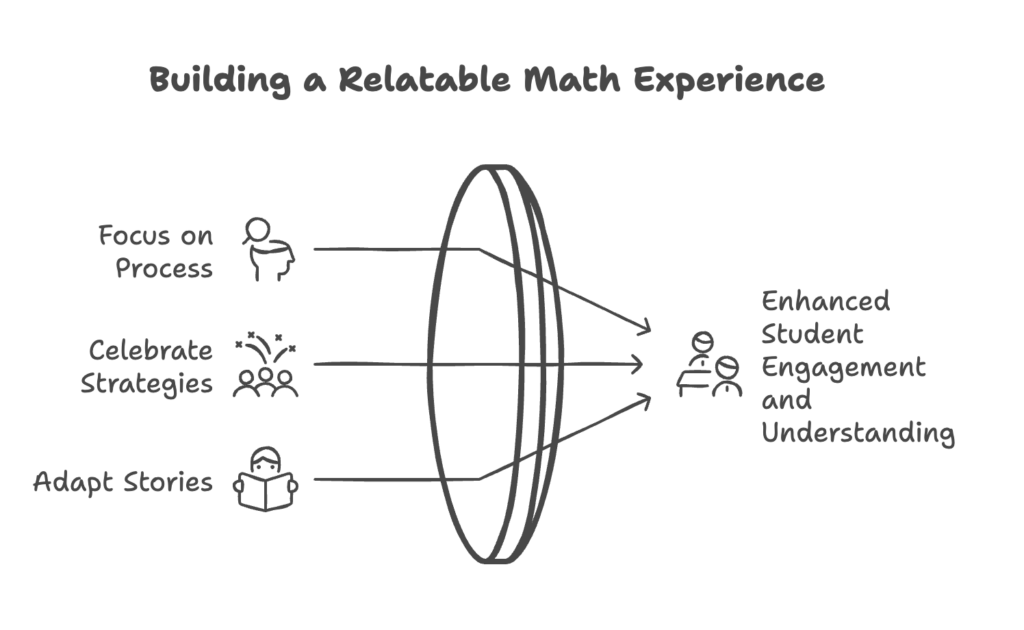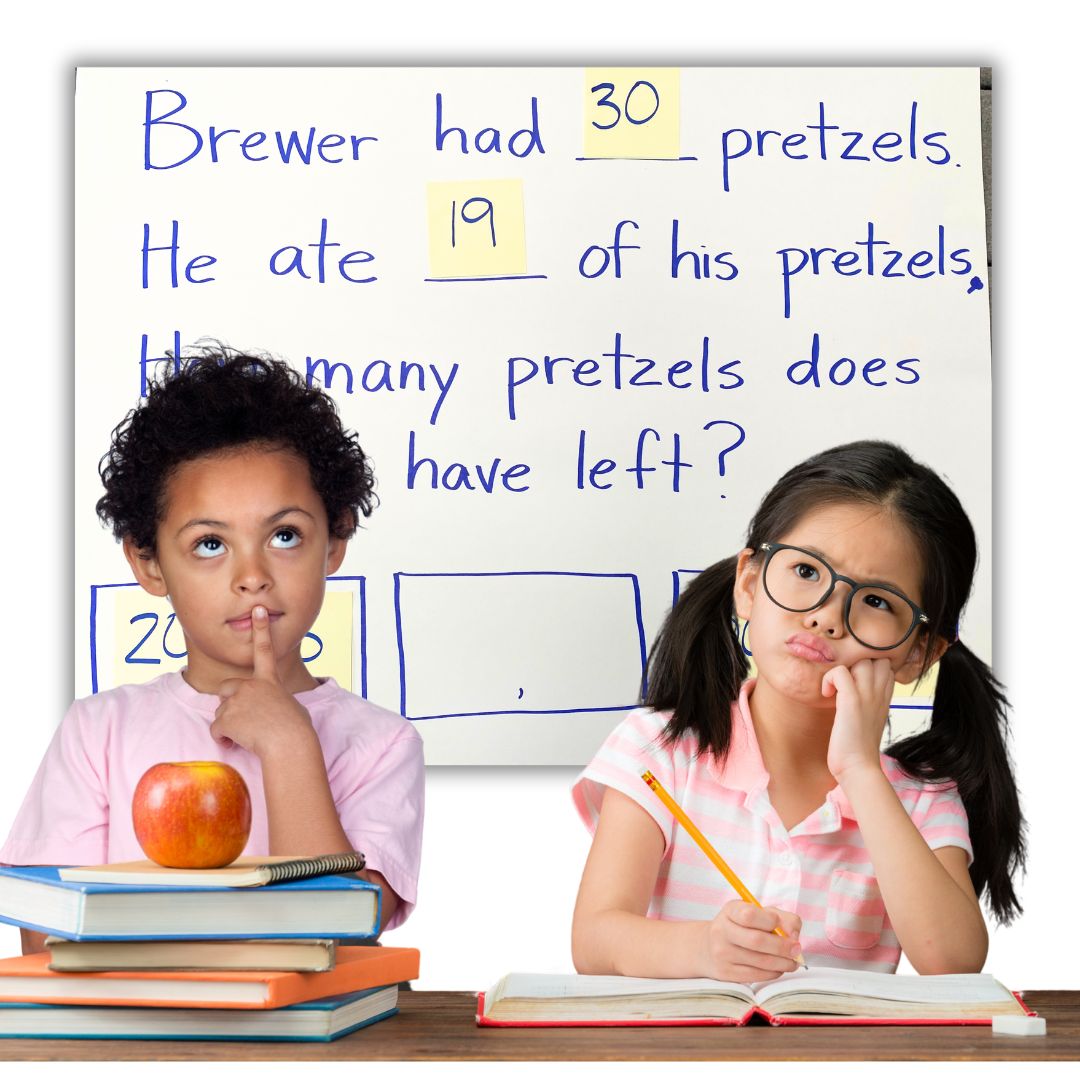Browse around
topics
Hey Friend!
Elementary Teachers who love talking about math.
We're Tiana & Whitney
Teaching math was not our favorite. We taught math traditionally with memorized steps and timed tests because we didn't know math could be fun. Read our story
The Power of Think-Time During Math Talks
Math Talks
Enhancing Math Conversations: Using Talk Posters Effectively
Math Talks
Build Multiplication Fluency with Visual Arrays
Fluency + Fun
Celebrating the Brilliance of Every Student in Math
Teacher Toolbox
Let's get Social!
Follow us on Instagram for the latest math tools and strategies!
Teaching math through stories has completely transformed the way I approach math in my classroom. Before I started using math stories, I noticed my students often saw math as a set of random rules and steps to follow—they weren’t making connections or truly understanding the “why” behind the numbers.
But when I introduced math stories, everything changed. My students became creative thinkers, confident problem-solvers, and eager mathematicians. Let me share how math stories work and why they’ve been such a game changer for my classroom.
What Are Math Stories?
Math stories are real-world scenarios that embed math problems in familiar, relatable contexts. Instead of starting with an abstract math expression like “3 × 8,” I give my students a story, such as:
Quinn has 3 bags with 8 cookies in each bag. How many cookies does Quinn have?
The goal of a math story is to encourage students to think deeply about the problem, visualize it, and solve it in a way that makes sense to them. Math stories shift the focus from just “getting the right answer” to understanding the problem and how to solve it.

Why Start Math Lessons with Stories?
1. Math Stories Build Conceptual Understanding
When I introduce a new concept, I start with a math story instead of a formula. For example, before I teach multiplication, I give my students problems about equal groups. They might solve the problem by drawing pictures of the bags and cookies and counting them one by one.
Yes, it’s not the most efficient method, but it helps them understand what multiplication actually means. They’re building a foundation that sticks, instead of just memorizing facts that don’t make sense to them.
Over time, as students work with similar stories, they start noticing patterns and relationships. They realize they can write “8” in each bag and add 8 three times instead of drawing all the cookies.
Eventually, they’re ready to see the multiplication symbol (×) as “groups of” and can write the equation 3 × 8 to represent the story. By starting with the story and moving to the symbols, I’m ensuring my students truly understand the math behind the equation.
2. Math Stories Promote Problem-Solving Skills and Creativity
One of the most exciting things about math stories is watching students develop their own strategies. At first, many of them rely on drawing pictures, and that’s okay!
Drawing helps them “see” the math and builds important connections. As they explore different strategies and see what works, their problem-solving skills grow.
Math stories also encourage students to think creatively. There’s no “one right way” to solve a story problem. Students can approach it in ways that make sense to them, and when we share strategies as a class, everyone learns something new.
3. Math Stories Connect Math to the Real World
“When will we ever use this in real life?” is a question I hear less and less since using math stories. By embedding math in everyday situations, students see how math is all around them.
Whether it’s sharing brownies, or figuring out how many packs of markers we need for the class, math stories help students make real-world connections that make the learning meaningful.

How I Use Math Stories in My Classroom
Step 1: Start with a Relatable Story
I make sure my math stories are fun, engaging, and something my students can visualize. For example:
Liam has 4 shelves of books with 6 books on each shelf. How many books does Liam have?
Using relatable contexts—like snacks, toys, or activities my students enjoy—makes the problems more interesting and accessible.
Step 2: Let Students Explore Strategies
After presenting the story, I let my students figure it out on their own. Some draw pictures, some skip count, and others might try repeated addition. The goal isn’t to get the right answer immediately but to explore, make mistakes, and learn.
Step 3: Connect to Math Symbols
Once students have had plenty of experience solving similar problems, I introduce the math symbols. I show them how the story connects to an equation, like “4 × 6 = 24,” and explain what each part of the equation represents.
I would read this as “four groups of six is twenty-four.” By this point, they’re ready to make the leap to abstract math because they understand the concept behind it.
Step 4: Use Stories Across Math Topics
Math stories aren’t just for multiplication! I use them for addition, subtraction, fractions, and division. Here are some examples:
- Addition/Subtraction: Sara has 25 apples and buys some more and now she has 37. How many apples did Sara buy?
- Division: Carson has 24 Pokemon cards that he wants to put in a book. If he wants to put 4 cards on each page, how many pages can he fill?
- Fractions: Emma has 9 cookies and wants to share them equally with 4 friends with none left over. How much cookie will each friend get?
It is also good to mix up math stories. If you always give multiplication stories, students start to learn they just need to pull out the numbers and multiply.
However, when you mix it up, students actually have to make sense of the story and figure out strategies to solve them.

Tips for Success with Math Stories
- Focus on the Process, Not Just the Answer
The goal of math stories is to build understanding, not just speed or efficiency. Celebrate creative thinking, even if the strategy isn’t the fastest. Efficiency will come with practice. - Celebrate All Strategies
Every student’s strategy has value. Sharing different approaches helps students learn from each other and shows there’s more than one way to solve a problem. - Adapt Stories to Your Students
Think about what your students love. Are they into sports? Use basketball or soccer stories. Do they love animals? Create problems about pets or zoo animals. The more relatable the story, the more engaged they’ll be. Also, use your student names to make them highly engagin.
Why Math Stories Matter
Using math stories has not only improved my students’ problem-solving skills but also their confidence. They see themselves as capable mathematicians who can tackle any challenge.
More importantly, they’re developing a deep understanding of math that will stay with them for years to come.
If you’re looking for a way to bring math to life in your classroom, try starting your next lesson with a math story. You’ll be amazed at the creativity, engagement, and understanding it sparks in your students.
Pin
Share
Leave a Reply Cancel reply
Previous Story
next Story
© 2025 Math Happy Hour. Site by Sugar Studios
Heard about Math Talks but unsure where to begin? 🤷♀️ Don't stress!
5 Steps to Get Started with Math Talks
Join us on Insta
We're so glad you're here, stick around and let's talk about math! xo Whitney & Tiana
